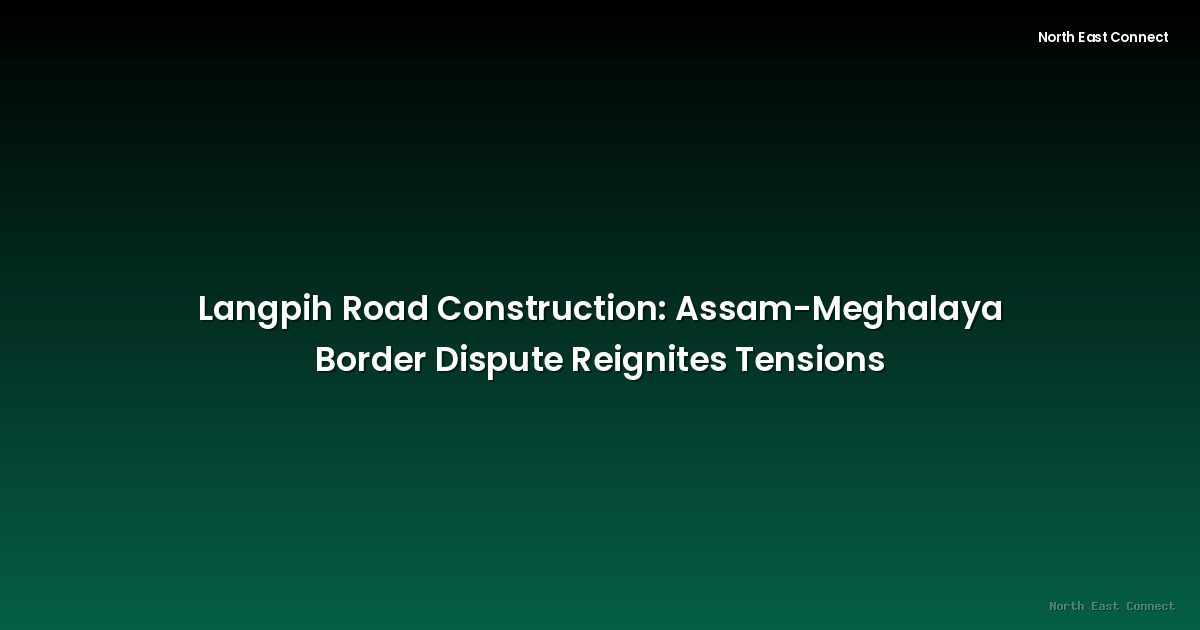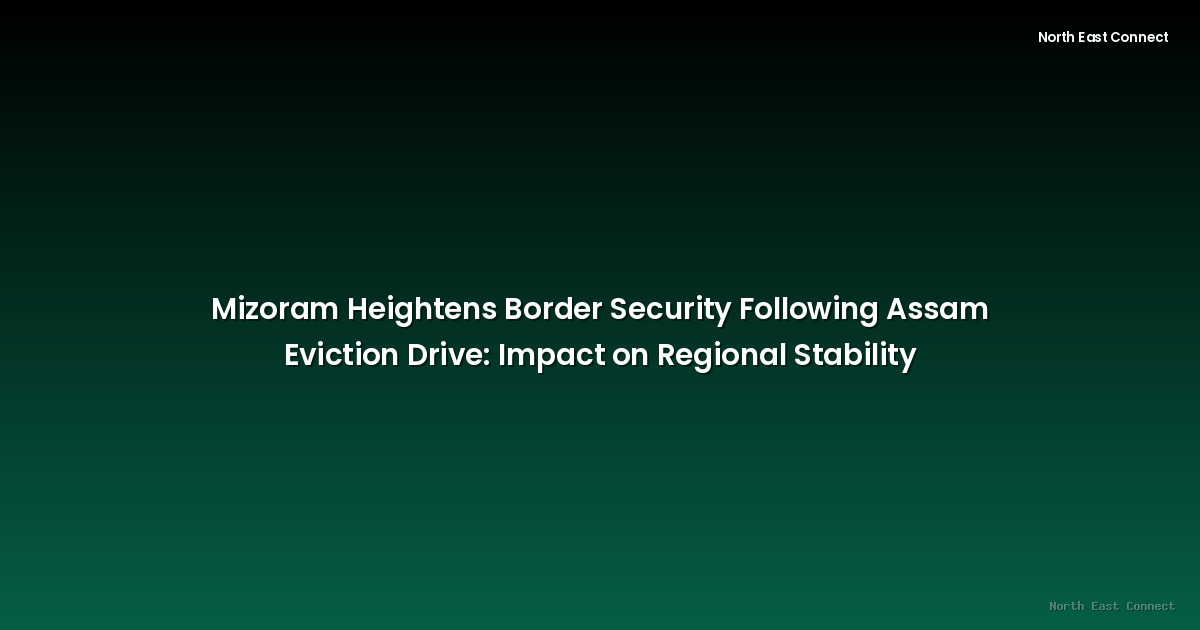2025-08-29 · News
The construction of a road by Assam in the disputed Langpih area has once again ignited tensions along the Assam-Meghalaya border. This development marks a renewed escalation of a long-standing territorial dispute that has periodically flared up over the years, causing uncertainty and concern for residents on both sides.
Langpih, a small village nestled in the hills, lies at the heart of the disagreement. The precise demarcation of the border in this region remains unresolved, leading to overlapping claims by both states. While the central government has attempted to mediate the issue, progress has been slow and inconsistent, leaving the area vulnerable to sporadic outbreaks of conflict.
The recent road construction, undertaken by Assam authorities, is viewed by Meghalaya as a unilateral action that violates the ongoing efforts to find a peaceful resolution. The Meghalaya government has expressed strong objections to the project, asserting that the construction takes place within territory rightfully claimed by Meghalaya. This claim is based on historical records and local administrative boundaries, points that Assam refutes.
The situation has understandably caused unease amongst the local population. Residents in Langpih, who often share close familial and social ties across the de facto border, are caught in the middle of a political tug-of-war. The potential for further escalations, including instances of violence, cannot be discounted.
The ongoing dispute underscores the complex challenges associated with resolving interstate boundary issues in India's Northeast. The historical context of these disputes, often rooted in poorly defined colonial-era boundaries, adds another layer of complication. Further complicating matters are the diverse ethnic and cultural factors present in the region.
The immediate consequences of the road construction include heightened anxiety and mistrust between the two states. The situation requires immediate intervention from both state governments to de-escalate the tensions and prevent any potential violence. Open communication and a commitment to finding a mutually acceptable solution are crucial to resolving the matter peacefully.
Moving forward, it's imperative that both Assam and Meghalaya engage in constructive dialogue, prioritizing the well-being of the residents in the affected area. The involvement of the central government, with a clear and impartial mediation strategy, remains essential to finding a long-term solution. This includes revisiting past agreements, employing modern surveying techniques to establish clear boundary markers, and potentially utilizing alternative dispute resolution mechanisms.
The failure to resolve the Langpih border dispute has far-reaching implications. It undermines regional stability, hampers development efforts in the area, and reinforces a climate of uncertainty among the local population. A peaceful and lasting resolution is necessary not only for Langpih, but for the broader stability of the Assam-Meghalaya border region. A collaborative approach that prioritizes dialogue, transparency, and respect for the concerns of all stakeholders is the only way forward to ensure a peaceful and prosperous future for the region. Only through a sustained commitment to resolving the dispute can the long-standing tensions surrounding Langpih finally be addressed.







